In Bali there remains a caste system, an import of sorts from India. Whilst this caste system once ruled social strata on the island, modernity has changed and moulded the way it is handled and approached today.
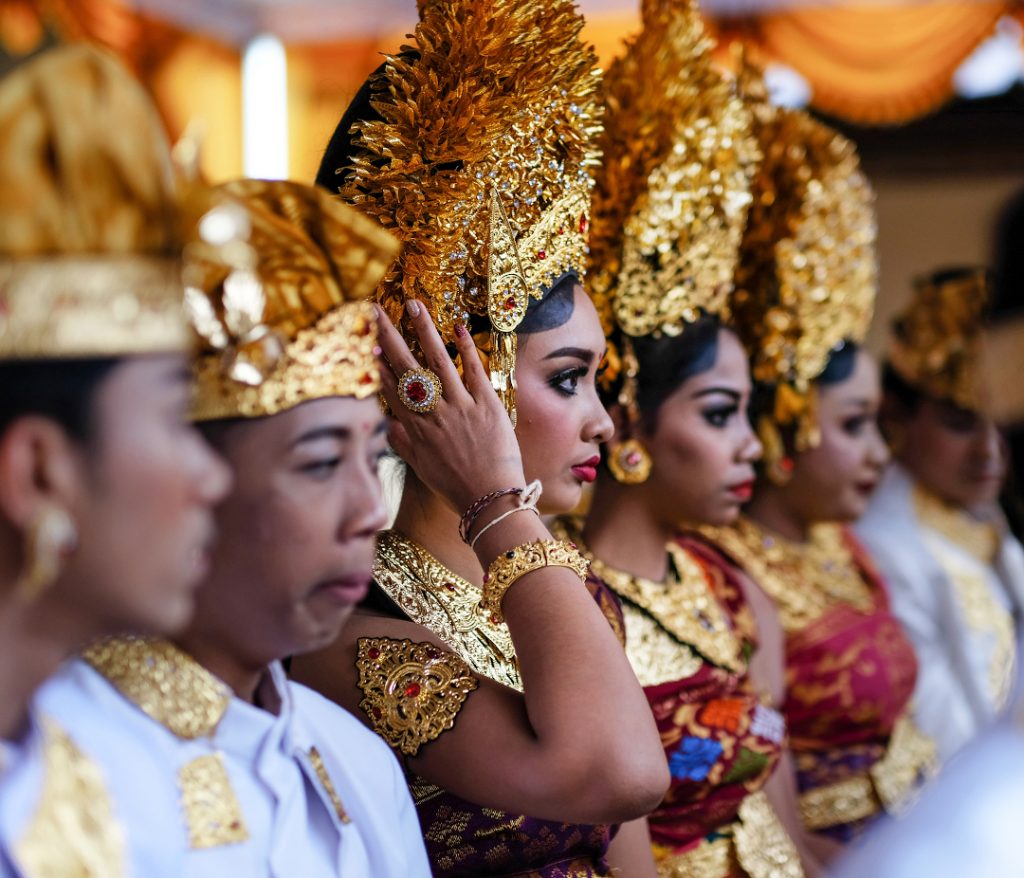
Michael’s Predicament
Michael has a problem. He is an idealist and, at his little diving business in Tanjung Benoa, he has always been keen to practice the kind of multiculturalism Indonesians are so proud of. One of his staff is a curly-haired youth from Sumba. His cook is from Java, a Muslim woman not reluctant, unlike some, to wash dishes that have been touched by pork meat. Yet, in spite of this openness, Michael has a typical ‘multiculturalist’ problem with his Balinese staff. His three Balinese staff – the driver, the mechanic and the handyman – don’t object to working with the Sumba boy and the Muslim cook. But, as they had him understand, they won’t accept working with Gungde, a young man Michael wanted to hire. Why? Because he is an Anak Agung, a nobleman from the Satria caste. Commoners discriminating an aristocrat! Has the world turned upside down? “You see,” Ketut the handyman told Michael, “please don’t hire Agung, I would not know how to speak to him, it will be too embarrassing for me.” “But why,” asked Michael? “Because I don’t speak high Balinese well enough!”, Ketut replies.
Yes, dear readers, Gungde did not get the job, because castes exist in Bali, and its victims are not always the low caste or Sudra people.
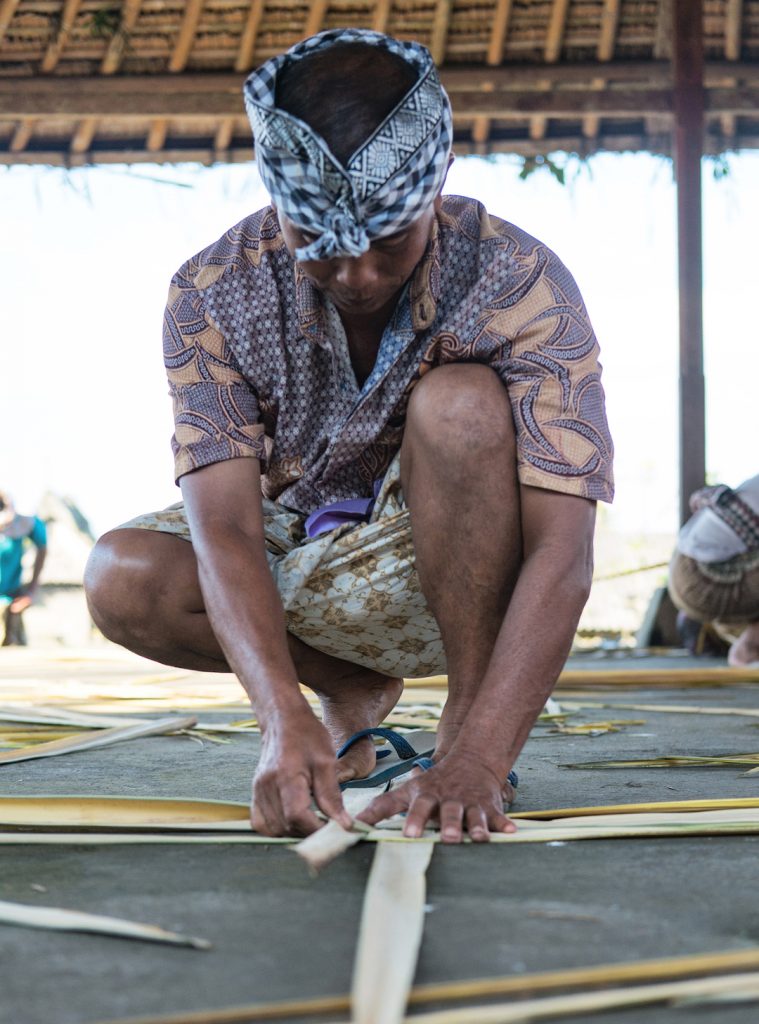
Caste in the Modern World
Caste relations can indeed be very complicated, especially in modern Bali. Take the example of what happened to Ketut Somprong. A failed student in anthropology at Universitas Udayana, he is the rich owner of a travel agency and a 25-room hotel in Canggu. For some business reason, he invited a foreign business partner to the best Italian restaurant in Sanur. So they sit, start talking, and who does he see coming, all smiles, with the menu card? Gustra, one of the sons of Ida Bagus Saputra, the head of the gria (Brahmin’s mansion) of his village. This is the very place where his father, and his grandfather before, have always gone whenever they needed holy water and advice for their ceremonies. The son of his ‘Surya’ (sun), as the Balinese put it! So, Somprong was the customer at the restaurant, but he owed high respects to the young man who was serving him food, a Brahmin of high rank, whereas, he himself was of a lower Sudra rank. How did they both come out of this conundrum? Somprong used “Tu”, my lord, to address the waiter in polite, high-Balinese, but he immediately shifted to Indonesian to reclaim some sort of equality.
So, as you can see, a caste system continues to exist in Bali, and, in spite of all the claims of democracy, it still imprints its mark on the daily life of the local people.
But what is the Balinese caste system all about? Outwardly, its basic nomenclature is similar to that found in India, with four castes: Brahmana, Satria, Wesia and Sudra. Theoretically the Brahmins are in charge of religion, the Satria in charge of politics, the Wesia in charge of trade, and the Sudra are the commoners.This caste status, called wangsa, is ascribed and inherited at birth.
Yet, reality is much more complex. The caste system only took its final shape in the 15th century, following the settlement of high priests who left Java when the island was experiencing a rapid Islamisation. The most famous is Dang Hyang Nirartha, whose children by various wives begot the shivaist Brahmin clans of Bali. Another important Brahmin is Dang Hyang Astapaka, the founder of the Buda clan. With the presence of Brahmins, princes and aristocrats found themselves and their many clans classified as Satria (warriors), the highest ones being descendants of the 14th century conquerors from Java.
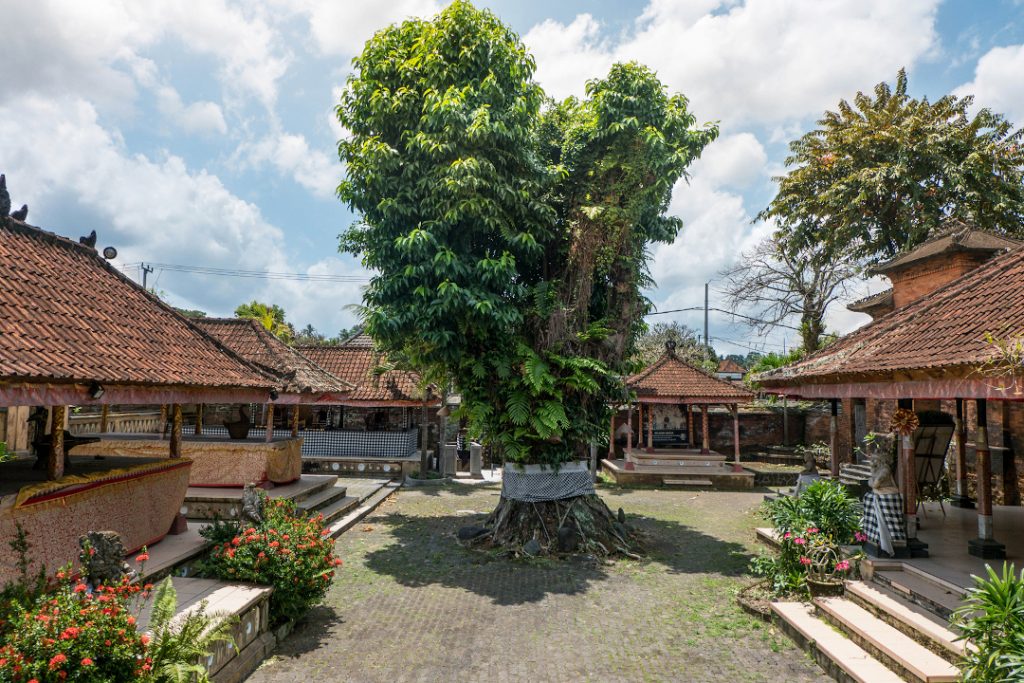
When the Dutch arrived, they were faced with an agrarian, rice-growing society focused around a set of princely puris (royal palaces) organising socio-political life and regulating the distribution of land and water and, intertwined into it, a set of grias (Brahmin mansions) giving to this same system its seal of sacredness. Princes could not go to war without referring to the Brahmin court high priest, the bagawanta, the providers of the holiest of holy waters, or tirta. There was a balance between the two types of power, political and spiritual.
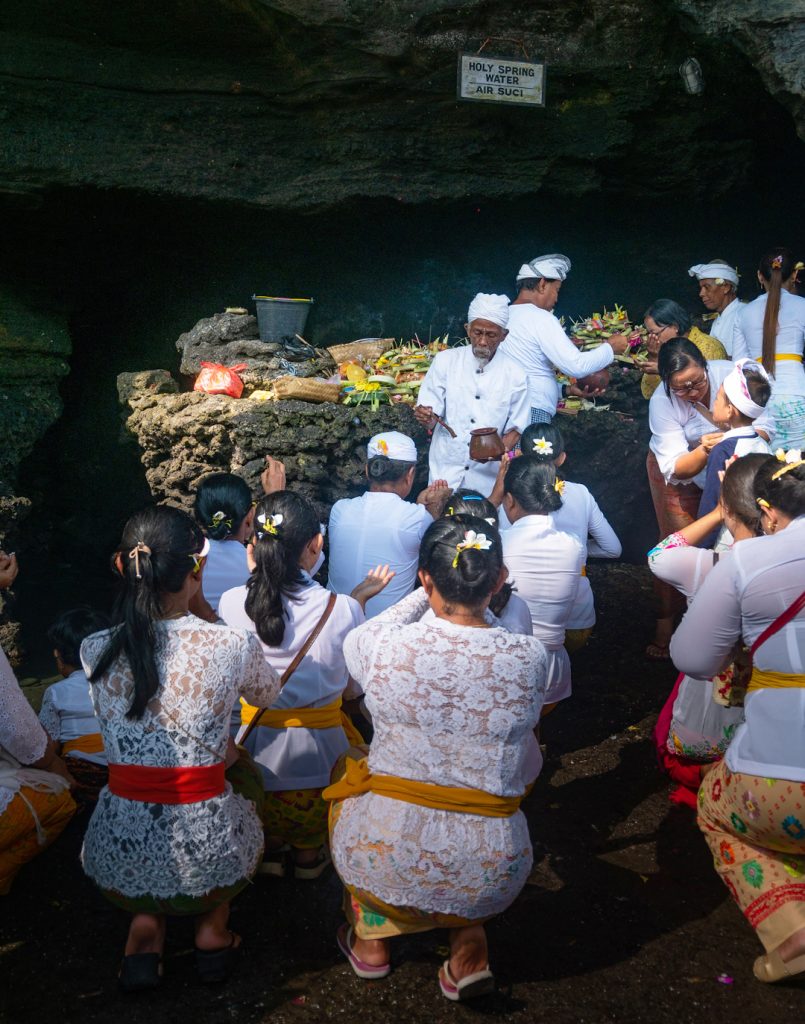
What about social reality. First, this aforementioned formal caste system, nominally quadripartite, is in fact three-partite: I know of no clan claiming to be Wesia. Furthermore the classification system does not stop here. The three higher castes (Brahmana, Satria and Wesia) are said to make up the Triwangsa, the Menak (aristocrats), whereas the commoners are the Sudrawangsa, Jaba (the outsiders). As much as 90% of the population is made up of commoners, themselves subdivided into many clans and sub-clans, with their layered system of temples.
The main issue is that social intercourse between castes is not, like in India, an avoidance due to ‘impurity’. People of different castes socialise and share rituals. It is more etiquette, in particular with regard to language. The level of language reflects not only knowledge, but status: one uses the highest level of Balinese when speaking to the high priest (pedanda) or to the king: common words are different when one talks, for example, about food for a priest, a prince or a peasant. To eat is medaar, or ngajengang or miyunin according to who is talking and who he/she is talking to. Differences of status are also prevalent with regard to sitting where and with whom, or even to the right to have this or that type of shrine and cremation tower.
Navigating the New Caste Landscape
Yet, even such a system cannot withstand the onslaught of modernity. The primacy of agriculture is a thing of the past. Half the population has moved to urban areas, and education is given in Indonesian, the national language, which, unlike Balinese does not have the levels of language that immediately stratifies people as soon as they open their mouth.
Furthermore, many Jaba commoners have accumulated wealth with the development of tourism, while many members of the Satria nobility have wasted their money in huge cremation ceremonies, a sign of their traditional prestige. In other words, wealth is no longer in the hands of the Brahmins and the blue blood princes. To add to the pain, princes have now not only lost their political power, their descendants have moved to the city, leaving their palaces empty back home, in the hinterland villages. The Brahmins, as providers of holy waters needed for the biggest ceremonies, have fared slightly better, but they have now to cope with competitors: non-Brahmin priests, who are now disputing their privileges. At the same time, combining business and politics, individuals from commoner clans are moving up and now putting up challenges at all levels of the social system.
So, how does society deal with this?
The first possibility is by changing language. More and more Balinese, while speaking low Balinese to their kin, use a middle-level, polite brand of Balinese in public village situations, for example during village/banjar monthly meetings. Better yet, when they move to the city or talk to non-Balinese residents, they shift to Indonesian, which is considered ‘neutral’.
Secondly, they adapt to their social environment. Let us say if they are in their village, on the occasion of a temple ceremony, they’ll address their high-caste co-villager in high-Balinese, but if they went to the same school in Sukawati for example, they will tend to use low Balinese. Low Balinese is the kind of language that allows you to relax, to forget about the constant social tensions – ‘speaking the right way, with the right formalism’- that is constantly compelled upon you in status-laden Balinese social intercourse.
So, what is taking place is that, bereft of its original agrarian and political function, the caste system is slowly waning, even in the villages. It is becoming no more than a tool, alongside clan networks, wealth and knowledge, in the generalised scramble for economic power, on which rest the modern claims to status and prestige. A class system is slowly superseding the caste system.
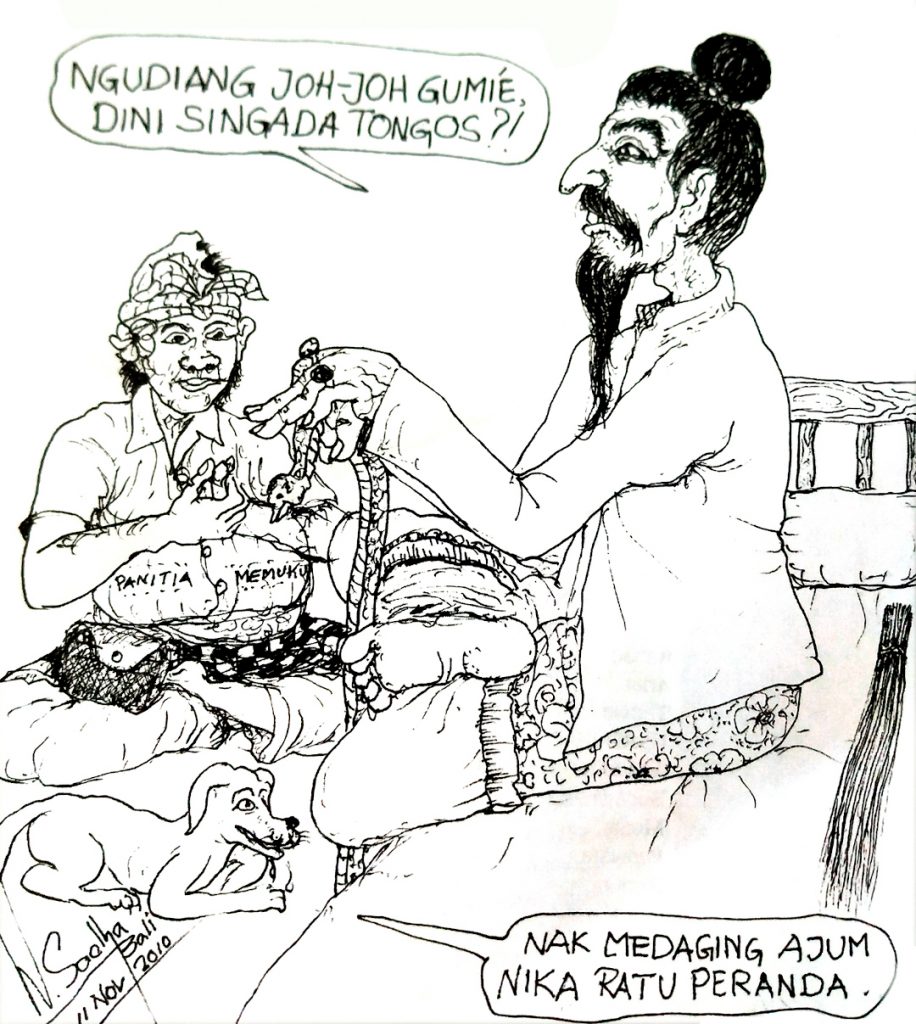
With the caste system being eroded by a sociological evolution towards a class system, there unavoidably came a moment when the ‘principle of caste itself’ is being challenged too. This originally took place in the name of progress, democracy and social justice – all ideas promoted by the left, and the communist party. After the suppression of the communists in 1965-1966, the critics of the caste system soon had to find a more efficient way to fight for equality. They found it in religion, by turning to Hindu reformism. Thus they asserted that according to ‘genuine’ Hinduism, that of India, such as stated in the Vedic books, there is no such thing as ascribed, inherited caste status. One’s real caste, they say, should reflect one’s real position. One is not born a Satria. Instead one becomes so if one becomes a warrior or a politician. Similarly, one is not born Brahmin, one becomes so if one makes spiritual life their purpose and priority.
This interpretation was a direct challenge to the notion of being ‘born’ Satria and born Brahmin. But it also corresponds to the spirit of the days. The Parisada Hindu Dharma (Council of Hindu affair) soon adopted this new, democratic interpretation. It had a very important consequence: to officially become a high-priest – a twice born dwijati – one does not have to be born into a traditional Brahmana family. One has simply to get the right education and go through a properly implemented twice-born (medwijati) ceremony.
What does that mean? It means that, today, alongside the traditional Brahmana priests, living in long-standing gria mansions most often attached to an old princely palace, and their own clientele of sisia among lower castes, one has all sorts of new hight priests who officiate for their respective clan groups: Rsi for the Satria, Empu for some commoners clans, Begawan for others etc..
Do all Balinese accept this new system? No, as soon as the Parisada had reinterpreted the scriptures to challenge the inherited caste system, or wangsa, it split. Most members of the old Brahmin castes could not accept their loss of control over religion. So, now there are two councils of Hindu Affairs. One that democratises the caste system and enables commoners and other non-brahmins to become priests; and the other for which if you are born a Brahmin, you remain a Brahmin, and if you are a commoner, you remain so… But Bali being Bali, and differences rarely turning into open conflict, this is rarely expressed in the open. It even happens that pedanda priests of old Brahmin blood officiate alongside new commoner priests.
On the whole, there is progress on the one side, in behaviour, language and rights. There are many situations in which caste is of little import. But there are other situations in which caste status comes back to the fore, in a backlash for power.






